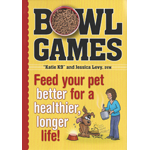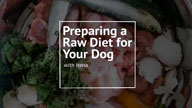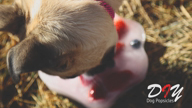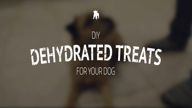All-Natural Diets for Dogs

There is a lot of talk in the dog world these days about ALL-NATURAL DIETS (AN). The purpose of this article is to explain what these diets are and the reasons why I feel everyone should consider feeding their dog a natural diet.
All-natural diets are also called RAW DIETS or BARF DIETS (BF). The BF came to this country from Dr. Ian Billinghurst, an Australian veterinarian that has written two books that I sell on natural diets. The common theme of these diets is that they feed raw human-grade ingredients. While the actual contents will vary in some cases, depending on the health needs of a particular dog, the quality of the food products does not change. The ingredients are raw and human-grade. This means that the meat that I feed is good enough for my family to eat. The vegetables come from the produce department of our local grocery store.
An all-natural diet begins with species-appropriate nutrition. In the case of our dogs, which are facultative carnivores, this means meat, bones, and the vegetable matter that is found in the stomach of prey animals that are killed.
Many people mistakenly feel they must feed pets cooked food. They are wrong. Dogs and cats have stomachs that are designed to eat raw food. That's why a dog can eat an old dead animal or fish and live through it. Many vets seem to forget this very important fact. I can't tell you how many emails I get from pet owners whose vets warn against feeding all-natural because of a concern over getting sick. The fact is this is BAD INFORMATION. If you keep your food fresh there are no concerns.
The digestive system of domesticated dogs is not designed to eat processed or cooked food. Obviously wild animals do not cook their food. Cooked food or commercial dog food takes longer for dogs to digest than raw diets. In addition, the heat used to actually cook the food destroys enzymes and antioxidants.
In 1932, Francis Pottenger M.D. did experiments with cats. He fed one group of cats a raw diet and a second different group a cooked diet. By the third generation, those cats that were fed a cooked diet could no longer reproduce. They suffered from skin problems, skeletal deformities, behavioral problems, and organ malfunctions.
The cats that were fed a raw diet thrived and reproduce easily. When the first- and second-generation cats on a cooked diet were put back on a raw diet, it took 4 generations for those cats to recover from the effects of the cooked food.
Foods to Avoid
- Chocolate
-
Sugar
Sugar increases a dog's chances of getting cancer. Sugar is made when dogs eat things like sugar beets, molasses, grains, or dairy products -
Grain
Dogs have no nutritional need for it. Carbohydrates from grain are simply not needed. Our pets get their energy from fats and protein. Grains break down into sugar which can grow yeast, produce mucous, and may contribute to a multitude of problems including skin allergies, cancer, digestive upsets, and skeletal disorders to name just a few. -
Yeast
This includes brewers' yeast. Yeast increases problems with allergies. Our pets have no need for yeast. -
Milk or dairy products
Dairy products turn into lactose in a dog's body. Lactose is sugar that will only cause problems with allergies. - Unhealthy treats (such as store-bought biscuits)
-
Cooked bones
Cooking bones makes them brittle and they then splinter when eaten.
Rules to Keep in Mind When Feeding Your Dog All-Natural
- Do not free-feed the dog. Pick up uneaten food between meals. Only leave the food down for 20 minutes at most.
- Serve food at room temperature.
- Do not microwave your pet's food or store it with aluminum foil.
- Give your dog FRESH WATER daily. Wash his water dish with bleach water on a regular basis. If you would not drink from a water dish, then it's too dirty for your dog to drink.
- Do not over-exercise after you feed your dog.
- Keep your dog thin.
- Store your oils in the fridge and shake before you feed.
- If your dog is pregnant, stop feeding bones several days before she gives birth. This helps soften stools and increases lactation.
How Much We Feed
I will begin this section by saying that it is a good idea to fast a dog that is over a year every now and then. Some do it once a week. We used to do this but don't anymore.
We do not do this with puppies, lactating bitches, or pregnant bitches. Fasting dogs helps clean out their system. Some feel it is a very healthy thing to get in the habit of doing. Fasting is a normal occurrence for carnivores. Fasting enables the energy used to digest food to be used for other things in the body. It's important to remember to make sure your pet has plenty of fresh water on fasting day.
Before I talk about the amounts that I feed, I will say that it is also not critical for the dogs to be fed exactly the same amount and type of food every day. In nature, wild dogs do not eat exactly 5 cups of food every day.
So with this in mind, I will begin the process of determining the amount to feed each dog by looking at the condition of the respective dog. Overweight dogs obviously get less food than very thin dogs which need more food.
The amount of exercise a dog gets will determine the amount of food it needs. For example, a dog that lives in an outside yard and runs the fence all day is obviously going to require more food than a 10-year-old couch potato who seldom goes out for a walk. So it's almost impossible to say that you feed a 6-month-old dog this much food or an adult male GSD this amount of food.
As a rule, Americans overfeed their dogs and keep them too fat. A thin dog is a healthy dog. A thin dog has fewer skeletal problems (i.e. dysplasia) than an overweight dog.
In the winter we will always feed our outside dogs more food than we feed the same dog in the summer.
With all of these variables, it's impossible for me to tell someone how much to feed their dog. If I can't see the dog, see how it lives, I can't say how much to feed it.
With this in mind, I will feed an adult male GSD 1 1/2 pounds up to 3 pounds of food per day. Some dogs just get chicken leg quarters (from Walmart), 400 units of vitamin E, and salmon oil. At times during the week, we will add in raw eggs, mackerel, sardines, and the various ingredients listed above. I try and mix it up to keep it interesting for the dogs. I really think they like this.
Understanding "Natural" and "Organic"
(From Pet Age, July 2005, page 32)
The terms "natural" and "organic" often are used interchangeably, but they have different regulatory meanings.
The Association of American Feed Control Officials defines "natural" as "a feed or ingredient derived solely from plant, animal or mined sources...not having been produced by or subject to a chemically synthetic process and not containing any additives or processing aids that are chemically synthetic except in amounts that might occur unavoidably in good manufacturing practices." Synthetic nutrients such as vitamins also are permissible.
The U.S. Department of Agriculture defines "organic" as "grown, raised or produced without chemical pesticides, irradiation, genetic modification, cloning, hormones or antibiotics." The regulations also detail the methods and practices that can be used in producing and handling organic crops and livestock. For example, livestock must have access to the outdoors.
The USDA's National Organic Program breaks organic products down into the following labeling categories:
- 100 percent organic - Product must contain only organically produced ingredients (excluding water and salt).
- Organic - Product must contain at least 95 percent organically produced ingredients (excluding water and salt).
- Made with organic - Product must contain at least 70 percent organic ingredients.
Products with less than 70 percent organic ingredients cannot use the term "organic" other than to identify the specific ingredients that are organically produced in the ingredients statement.











Ask Cindy.